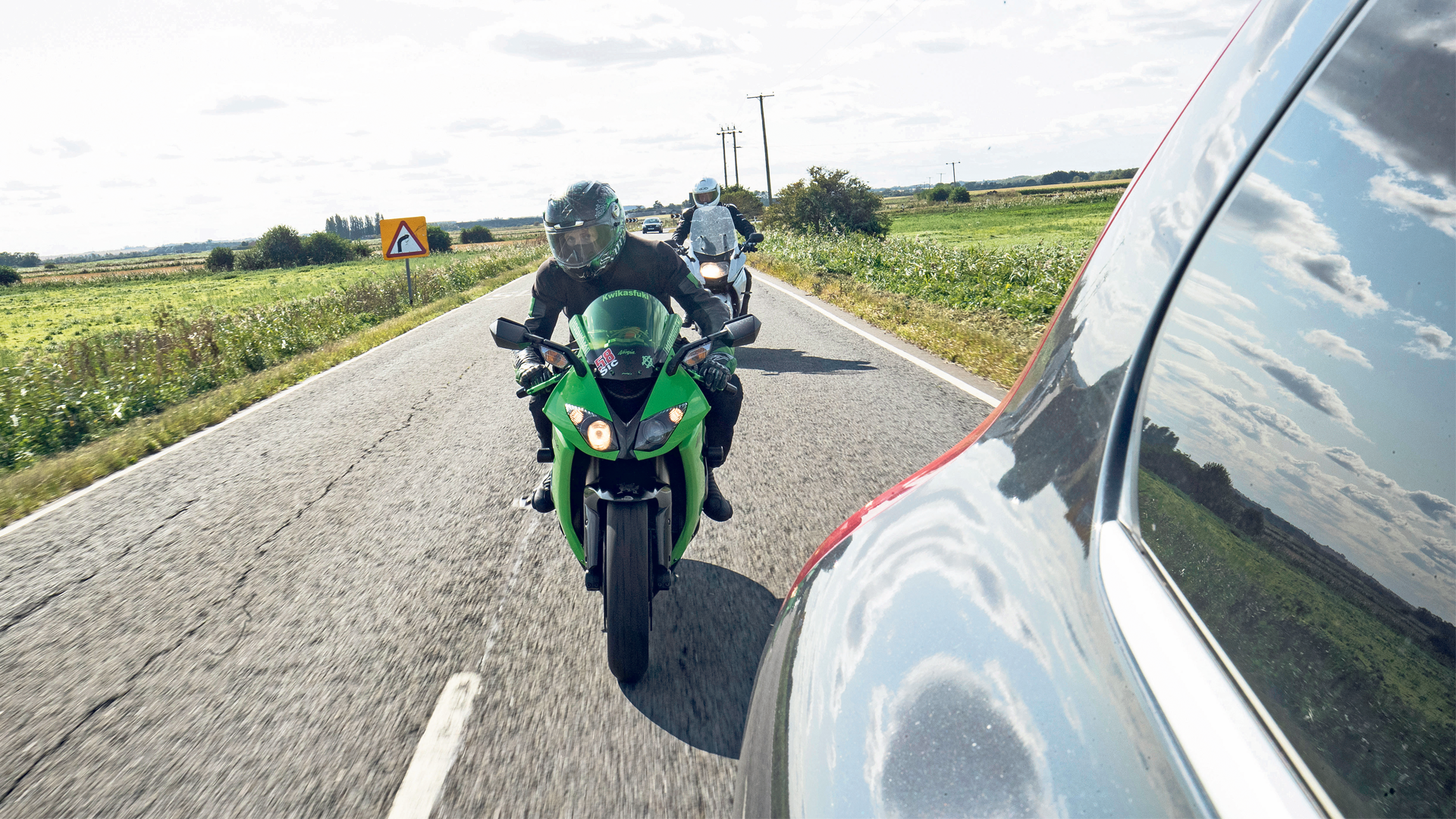
Overtaking
Take over the world one car at a time
Overtaking is a core skill for all riders –here’s how to get it right every time
Leaving your planning for an overtake until the last minute will usually result in you being right on top of the vehicle ahead before thinking of how he should get past it. As soon as you spot an upcoming vehicle in the distance, start to work on a plan. Ask yourself what you can see, what you can’t see, and what you could reasonably expect to happen.
Hovering right up behind the vehicle you’re trying to pass, waiting for an overtake to become available not only limits your view of what’s ahead, but it puts you in a risky position close to the vehicle and oncoming traffic. It can also be distracting and intimidating for the car driver you’re trying to pass.
The ‘Overtaking Triangle’ is an imaginary scalene shape on the ground extending behind the vehicle ahead into which our bikes must not enter. Position yourself at the triangle’s most distant point, two seconds back from the vehicle ahead – this is the following position.
When an overtaking opportunity becomes available, move to the pre-overtake position at the top of the triangle without entering inside the imaginary area. Then, all being well, pull out to the overtaking position ensuring you’re in a responsive gear, and checking rear observations. If the overtake is still on, indicate and move out laterally into the other lane. Keep looking and scanning ahead. Once in the lane, if the overtake is still on, use strong acceleration to overtake the vehicle. Check mirrors then back off throttle and smoothly return to the correct lane. Use the pre-overtake position if there’s another opportunity to go, or if not just drop back to the following position and reset.
The pre-overtake position is closer than the two-second rule, so in the event that the overtaking opportunity is no longer possible, drop back to the following position.
The imaginary triangle isn’t a fixed shape, so – whilst maintaining a two-second gap – move around in your lane as normal to maximise your view ahead. Aim to keep the vehicle ahead as small in your vision as possible – this is helpful when it comes to passing lorries. Throw your vision between the distance and middle ground. Is the way ahead clear? Is there enough space to pull in safely? Is the overtake necessary and also worth it?
QUICK TIPS
Hello there
When you can see you’re catching a vehicle, reduce your speed to take a following position. Assess the road layout for hazards. Try to see what the driver ahead might do and what is happening behind. Work out when you’ll need to overtake and when. It’s all about preparing to overtake, planning and using the information in front.
Get ready…
Minimise the distance you need to travel to overtake. But don’t get too close… it will jeopardise safety. You want to leave plenty of room between the car in front, and yourself, you don’t want to be on the ‘back bumper’ of the car you’re about to overtake. Select a responsive gear, check behind, flick your indicator and move out then make final observations ahead.
Moving in
Once you’ve gathered the information and you’re preparing to overtake, indicate early in plenty of time to show other road users you intend to move lanes. This helps crate space. Accelerate smoothly past the vehicle ensuring that you leave plenty of space when you return to your lane. Once you’re past the vehicle, do a lifesaver and start to gently arc back into your lane. Don’t dive back in too rapidly, and don’t forget to acknowledge other drivers.


